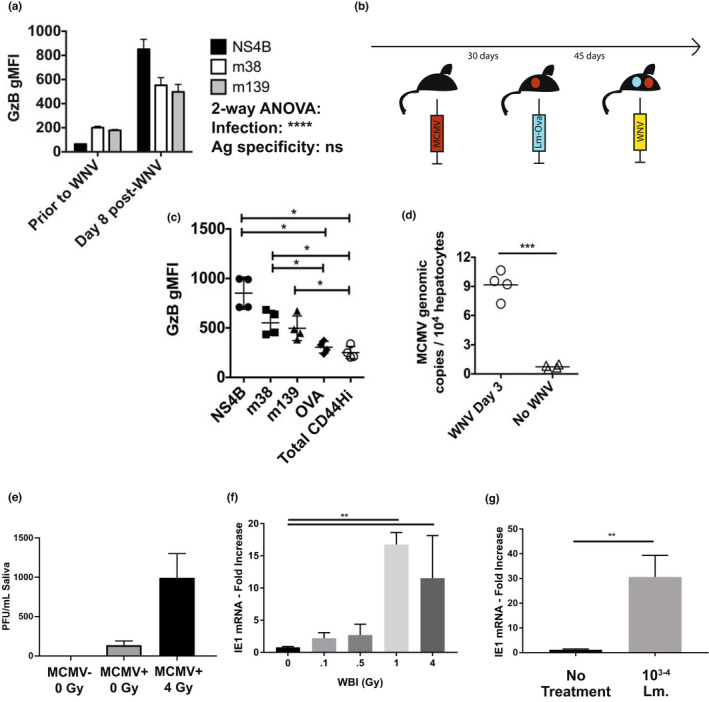FIGURE 5.

WNV infection causes reactivation of MCMV in adult mice. (a) Geometric MFI of granzyme B in tetramer‐specific CD8 T‐cell populations in PBMC from n = 4 adult MCMV(+) (latent) mice prior to WNV infection, and on day 8 post‐WNV infection. Tukey post‐tests between tetramers = ns. (b) Experimental design for data shown in (c). Mice were infected IP with 200 pfu smith strain MCMV, then rested for 30 days. Mice were then infected IV with 105 cfu listeria monocytogenes expressing OVA epitope (LM‐ova). Memory populations were allowed to mature for 45 days. Mice were then infected with 2000 pfu WNV IP. (c) Geometric MFI of granzyme B in tetramer‐specific CD8 T cell populations from splenocytes collected on day 8 post‐WNV infection from mice in experiment (b). CD44hi = the remainder of tetramer non‐specific, CD44‐hi T cells. Shown are the results of Bonferroni post‐tests. (d) Genomic copies of MCMV from livers of mice with latent MCMV, either without WNV, or on day 3 post‐WNV infection, from qPCR for MCMV genomic DNA. (e‐g) 90 days after primary MCMV infection from 3 months of age, MCMV genomes were recovered from saliva day 3 post 4Gy irradiation and (f) transcription of MCMV IE1 was measured in the salivary gland 3 days after a titrating dose of irradiation (as indicated) or after (g) infection with 103–4 CFU of listeria monocytogenes (Mann–Whitney)
